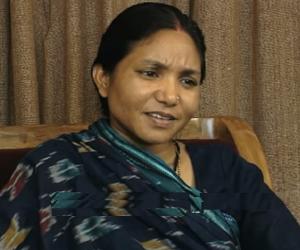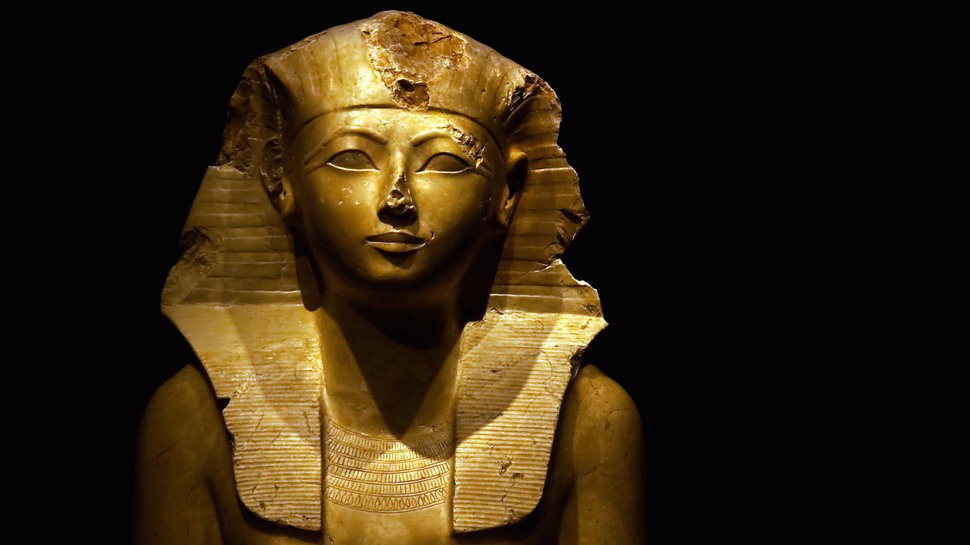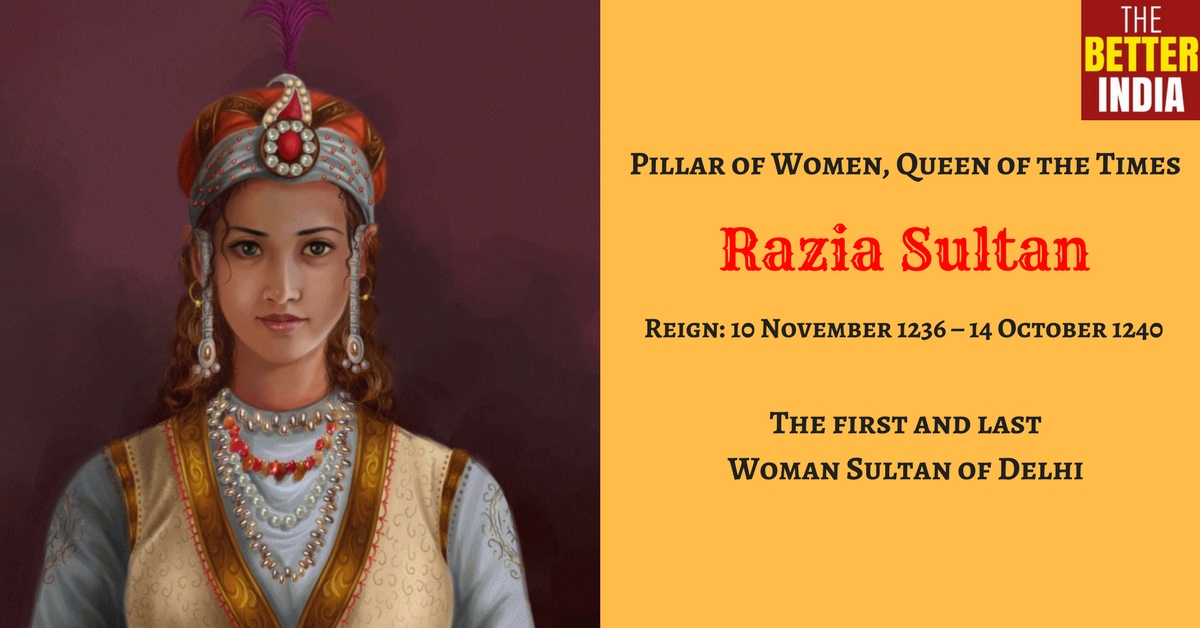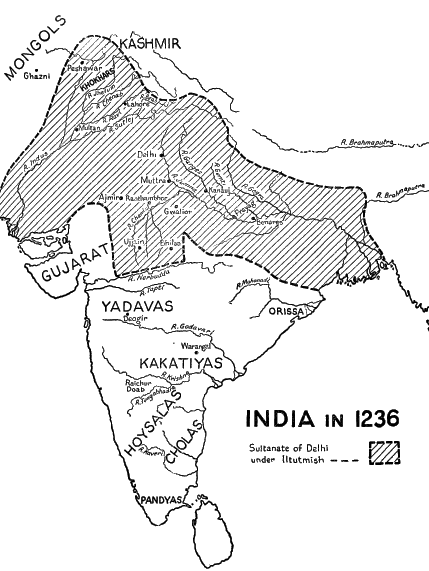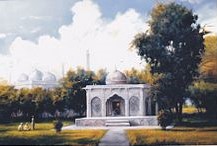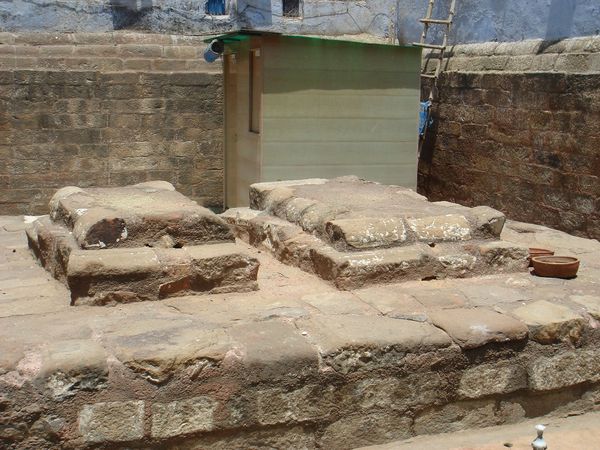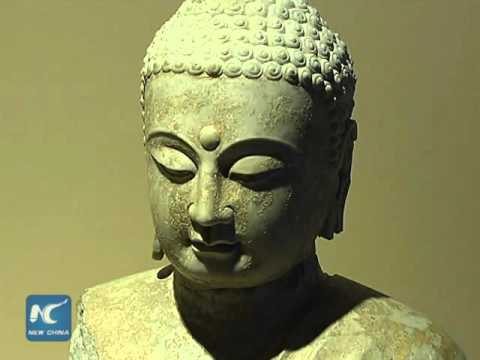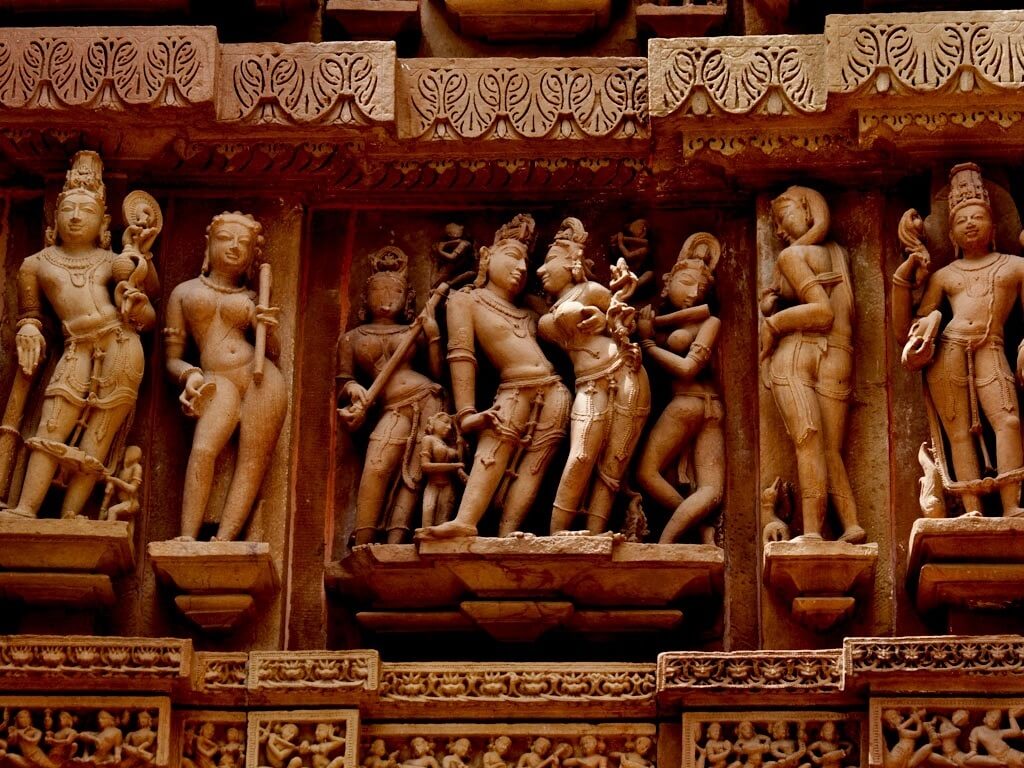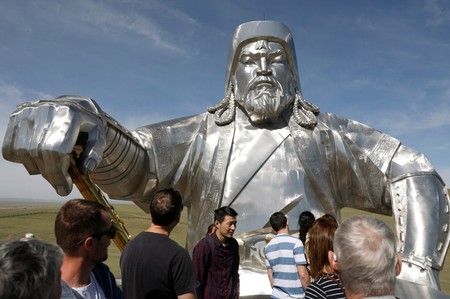
Source : Google photo of Genghis Khan statue in Ulan Bataar , Mongolia
Synopsis : The quest for supremacy to gain territories and fortune using brute force was the practice not too long ago when it gave rise to brutal conquerors like Genghis Khan, Tamerlane and many others who are even romanticized and lionized in their own country today but the fact remains that such people were egocentric who did not care how much blood they shed to gain their supremacy. The blog compares them to the animals in the wilderness and finds them wanting.
We are different from the animals in one noticeable way . We fight to achieve supremacy over others for various reasons but mostly for self gains while animals also fight for supremacy with a noted difference. They do not do it for self gains but rather to give the mates to produce the best off-springs by passing on the best genes that a strong male provides. Thus the weak off-springs that come from poor genes are culled or they die due to their poor ability to survive in the nature.
So while we have the same tendency to achieve supremacy, we do it for selfish reasons while the animals do it for the improvement of their species. You will hardly ever see weak or deformed animals in nature because they are born healthy and are well taken care of by the mothers until they can be on their own. Female animals are fiercely protective of their off-springs and will sacrifice their own lives in order to save their young ones. So I consider the animals noble.
We the humans are not like the animals because nobility is not a part of our intrinsic values .We often come to know about mothers who abandon their newly born children or dump them in garbage bins to avoid the responsibility for raising them. Animals never do that.
If you ever see the herd of wild elephants or wild dogs, you will notice that the entire herd takes on the responsibility of raising the young ones by feeding them, protecting them and teaching them the basic skills of survival while we are so selfish that we do not follow such admirable habits of wild animals and often do a very poor job of raising our own that has severe social consequences later.
We do not improve our species by introducing the very best genes to the next generation so we see short and ugly people everywhere who in their turn produce more such people because of their very limited gene pools. It is particularly true in island people who have been isolated from the rest of the humanity for a long time although that is changing now so people are not so isolated as before. Indiscriminate breeding in humans has led to unhealthy babies , babies with deformities or genetic diseases that destroy their lives. Humans also suffer from inbreeding in many countries that has severe medical as well as social consequences for the progeny.
We tend to fight for supremacy for reasons that are not similar in the animal kingdom. It has to do with the need to gain an advantage over others to gain power, wealth and dominance that gives us tremendous social advantages. In the past, this desire to be the supreme and get all the advantages that come with it led to endless wars when millions of innocent people were slaughtered just so that one man could gain vast territories and exploit its rich resources. Genghis Khan was a good example so I chose his photo in the header section above.
Romans were ruthless in extending their empire through warfare to get riches, slaves and source of food while Alexander invaded countries that had meant no harm to him or his subjects in Macedonia just so that he could brag that he conquered the world by shedding blood of innocent people. Genghis Khan did the same in his quest for conquering vast territories to gain riches and destroyed many countries in the process.
In the modern world , we believe in democracy so most of the countries elect their government that tries to govern through a system where a consensus is needed to do so. Still we have endless wars in many parts of the world because some countries seek dominance over others through their military power to gain some advantage over them. It may be for cheap oil or other mineral resources or for geo- political reasons that give them certain advantage over others.
The animals also fight for their territories and keep it because it is a necessity for them to survive while it is not so with us so we are not like animals. We try to project our military power to intimidate others who are not like us and who resist such intimidation giving rise to wars but often this intimidation is a reflection of our own values that we project as superiors to others. The whole idea of colonialism was based on the feeling some countries had that they were superior to others so they invaded them to colonize them and get their rich resources to develop their own and spread their brand of values among the conquered people to" civilize " them. Paul Gauguin expressed this feeling of superiority in the Christian missionaries in Tahiti in one of his painting so eloquently that showed the sad faces of women who were subjected to the vicious cultural and religious invasion by the missionaries there.
The feeling that we are superior to other human beings is the root of all evil in the world that has caused millions of death and widespread physical destruction of countries that just wanted to be left alone. The Vietnam war is one example but there are many others.
The attitude that my religion is better than yours so you must accept it has meant forced conversion of peaceful people who were happy the way they were that has led to invasion and wars like in India when the Muslim invaders came to convert the whole country by force and drenched its soil with innocent blood and they are still at it elsewhere in the world today.
The greed for power makes some people the abomination that the decent people everywhere deplore but it is as old as the history of humans. In the early history of humans when there were very few people in the world, there were conflicts among various groups that fought for the same resources such as food , water and shelter so a stronger group chased the weaker one out forcing them to migrate to other parts. We see this selfishness in eagle chicks that shove the weaker chicks off the nest so that they can get more food and become stronger but this is not a widespread phenomenon in the animal kingdom.
We on the other hand have this survival instinct that prevents many of us from sharing our food, shelter and care with others who are not like us so we learn to discriminate people based on their race, social, religious, political, ethnic or other status creating divisive societies. Boats full of black people seeking shelter in Europe are being chased off by the police because they are not wanted.
In the olden days, it was a common practice to gain the upper hand over others by violent means so we learn that the Mughal princes often killed their own brothers to become the king or put their own father in jail to ascend the throne. Julius Caesar was killed by the senate members whom he knew well because someone else wanted to replace him. Cleopatra had her own sister Arsinoe IV and her brother killed so that she could become the queen of Egypt. There are numerous examples in the history book where people fought for supremacy through such violent means.
In the modern world , we still have people who want to attain power and supremacy over others by suppressing democracy so that they get all the benefits while people remain poor and starving. We have North Korea as an example of this greed for power but there are many failed states where such power struggle has decimated them with little chance of recovery. People have a chance to prosper if they are free and choose their government freely that puts country first. Bangladesh and Vietnam are good examples where the freedom has brought them the peace and prosperity.
But I cannot be smug about the much vaunted democratic countries where the power hungry are just as vicious as in the totalitarian countries where despots rule. They do it through fraud, rigged ballots, bribes, outright killing of opponents, readjusting the voter's list by purging those who will not vote for them, through tampering of voting machines, through illegal voters and simply not allowing a fair vote count if it is going against them.
This desire to rule and accumulate vast amount of public money and properties in so called democratic countries makes people vicious who vie for supremacy there. In essence they are really no different from the Romans and Macedonians who favored brute power to rule over others and get rich in the process. So there is no perfect democracy even today even after such a long time since the Greeks started to use the word . Some call it a work in progress but I wonder if two thousand years are not enough to make democracy perfect. Read my blog called Democracy is a beautiful word here.
The reason why it takes such a long time to make a country truly democratic is hidden in the very basic nature of some people who seek supremacy over others through any means so that they get all the benefits and leave people in the dust to suffer. A political person will resort to any means to preserve himself especially if he is corrupt and who one day may face the court to account for his abuse of power and ill gotten wealth.
It reminds me of the movie Godfather where the mafia people bribe the judges and the policemen to ignore or overlook their shady business practices in the same way the corrupt politicians fill the courts with their appointees and bribe others to buy their support to push their own agenda and self preservation. Such corruption worldwide deprives the countries billions of dollars that make some individuals very rich and people poor. Read my blog A monster called corruption here in this context.
So when you call someone animal as a derogatory term, just remember that it is a misuse of the word because the animals are noble. We have a lot to learn about compassion, sharing, caring for others, loyalty and justice from the animal world where they even show compassion for other species that is so hard to find in us.
Note : My blogs are also available in French, Spanish, German and Japanese languages at the following links as well as my biography. My blogs can be shared by anyone anytime in any social media.
Mes blogs en français.
Mis blogs en espagnol
Blogs von Anil in Deutsch
Blogs in Japanese
My blogs at Wix site
tumblr posts
Blogger.com
Medium.com
Anil’s biography in English.
Biographie d'Anil en français
La biografía de anil en español.
Anil's Biografie auf Deutsch
Anil’s biography in Japanese
Биография Анила по-русскиu
